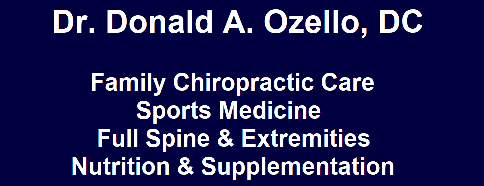Exercising correctly and consistently is a vital ingredient to living a healthier, fitter, more functional life.
The musculoskeletal system requires increased oxygen during exercise. The cardiovascular system responses by increasing your heart rate. The additional blood flow from a stronger, faster heartbeat supplies your muscles with large amounts of needed oxygen.
Aerobic exercise is defined as endurance or prolonged training. A perfect example is jogging. The muscles demand an increased amount of oxygen from the circulatory system for energy. Sustaining an increased heart rate during aerobic exercise strengthens the heart and builds endurance.
Anaerobic exercise is defined as strength training. An ideal example is sprinting. Your body relies on energy storage in the muscles during anaerobic activity. Throughout and immediately following anaerobic exercise the heart beats stronger and faster.
Exercise three to four times weekly to build cardiovascular strength and stamina. After a thorough warm-up, train within your target heart rate for ten to sixty minutes to achieve maximum benefits.
Target Heart Rate (THR) is the range of desired heart rate (Beats per minute) for safety and efficiency. It is a gauge to help you keep safe while building and improving cardiovascular health and aerobic fitness.
To determine your target heart rate, you must first determine your Maximum Heart Rate (MHR). Determine your maximum heart rate by subtracting your age from 220. Your Target Heart Rate (THR) for aerobic training is 50 to 80 percent of your maximum heart rate.
If you are 20 years old, your target heart rate is 100 to 160 beats per minute. 220 – 20 = 200. 200 x 0.5 = 100. 200 x 0.8 = 160.
If you are 50 years old, your target heart rate is 85 to 136 beats per minute. 220 – 50 =170. 170 x 0.5 = 85. 170 x 0.8 = 136.
A second formula to determine Target Heart Rate is named The Heart Rate Reserve Formula and is also known as The Karvonen Formula.
To determine your target heart rate using the Heart Rate Reserve Formula / Karvonen Formula the first step is to determine your Maximum Heart Rate. This is done by subtracting your age from 220.
The second step is to subtract your resting heart rate from your Maximum Heart Rate. This number is known as the Heart Rate Reserve.
Multiply your Heart Rate Reverse Number by 0.5 & 0.8 to determine 50 & 80 percent. Add your Resting Heart rate to each number to get your Target Heart Rate.
Age 20. Resting Heart Rate 70 BPM. 220 – 20 = 200. 200 – 70 = 130. 130 x 0.5 = 65. 130 x 0.8 = 104. 65 + 70 = 135. 104 + 70 = 174.
The Target Heart Rate using the Heart Rate Reserve / Karvonen Formula of a 20-year-old with a Resting Heart rate of 70 is 135 to 174 beats per minute
Age 50. Resting Heart Rate 70 BPM. 220 – 50 = 170. 170 – 70 = 100. 100 x 0.5 = 50. 100 x 0.8 = 80. 50 + 70 = 120. 80 + 70 = 150.
The Target Heart Rate using the Heart Rate Reserve / Karvonen Formula of a 50-year-old with Resting Heart rate of 70 is 120 to 150 beats per minute.
Monitoring your heart beats per minute while training is easy. You can wear a heart rate monitor or you can assess your pulse at the carotid or radial sites. Take your pulse at regular intervals, ideally every 2 to 5 minutes, and adjust your training intensity accordingly.
Target heart rate is a gauge to help you build cardiovascular health and keep you safe while training. Combine the use of frequently checking your pulse to stay within your target heart rate and listening to your body while exercising for maximum benefit and safety.
Paying close attention to your body’s signals and how you feel during exercise is known as perceived exertion. This common sense approach allows you to listen to your body and adjust your workout intensity.
Beginners and advanced trainees need to carefully monitor their heart rate and pay special attention to how their body responds while performing aerobic activity.
Perceived exertion and target heart rate monitoring are valuable tools to increase the productivity and safety of your training. Consistent, efficient workouts build cardiovascular health and improve your health, fitness and functionality.
Dr Donald A Ozello DC of Championship Chiropractic in Las Vegas, NV
Web Site: http://www.championshipchiropractic.com/
Blog: https://www.championshipchiropractic.com/wordpress/
YouTube: https://www.youtube.com/user/drdozellodc/videos
Twitter: https://twitter.com/drdozellodc
Facebook: https://www.facebook.com/Championship-Chiropractic-280141628688300/
LinkedIn: https://www.linkedin.com/in/dr-donald-a-ozello-dc-716b3233
“Running: Maximize Performance & Minimize Injuries” https://www.amazon.com/Running-Performance-Chiropractors-Minimizing-Potential/dp/1493618741
**Disclaimer: Always consult a medical professional before beginning an exercise program. Always work within your capabilities. Never perform an exercise that elicits or increases pain or symptoms. Reading this article and viewing the linked videos does not take the place of seeing a medical professional. Please visit a medical professional for evaluation, diagnosis & treatment.

